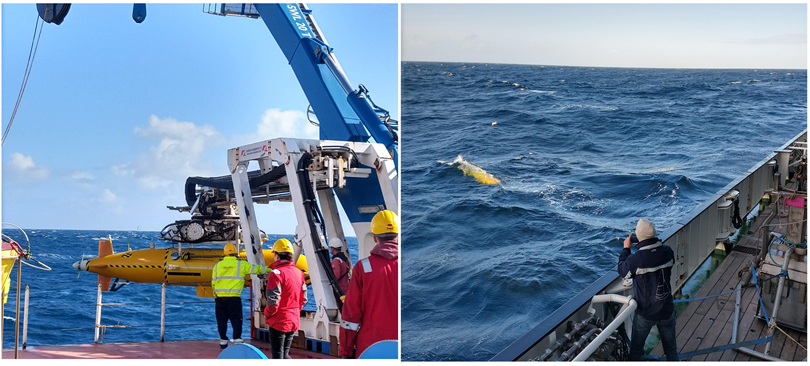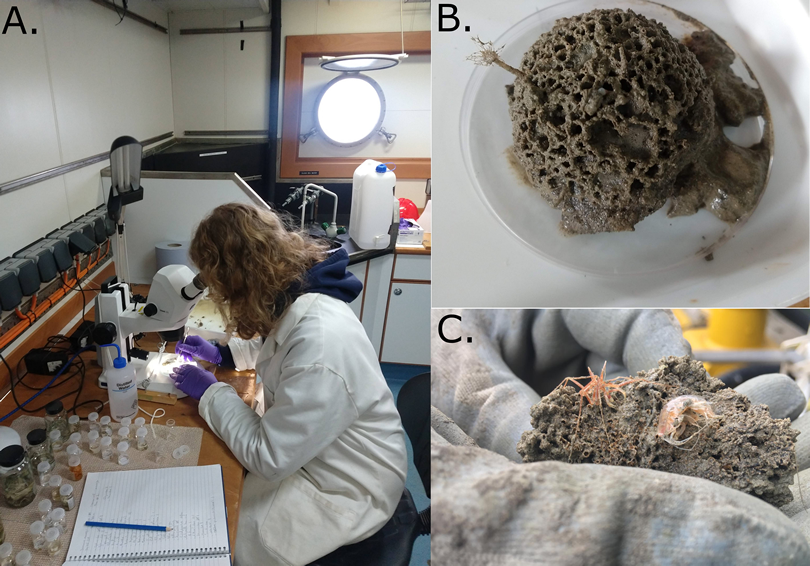After the success with our first AutoSUB6000 survey around the Darwin Mounds, the AUV was deployed for the second time and our team of scientists from the sister project BioCAM are extremely excited to see all the data it has been collecting during its surveys.
In every dive, our scientists aim to improve the AUV’s settings to increase its diving performance. They are now working on processing the data that their new camera system has collected. We will tell you more about BioCAM in our next blog post, so stay tuned!
The fact that the AUV can map the substrate at higher altitudes (>5 m) is a great feature because we can get photographic cover over a 100-hectare terrain per dive. It definitely helps us to understand the big picture when monitoring marine environments. So far, every AUV dive has brought some exciting data for us. And, of course, we will share our findings with you on our next posts!

We are also collecting boxcores from the Darwin Mounds area, to sample the macrofauna (the animals between 1mm and 1cm large). So far, we have collected around eight boxcores from the Eastern and Western Darwin Mounds. This week, we started identifying the macrofauna samples we collected during the sieving process. The sieving process is an essential step to separate the macrofauna from the substrate for further sampling and identification.

According to our team of scientists on board, the cores showed large biodiversity, with around 50 different families in each boxcore, recognized under the microscope. This confirms how rich the environment around the mounds is. The findings will be compared to the data obtained in 2000 and 2011 to see the evolution of the macrofauna community composition in the Darwin Mounds in the last two decades.
Keep an eye on our blog because there is much more to come during the next 2 weeks!
Blog written by Larissa Macedo and Loic Van Audenhaege